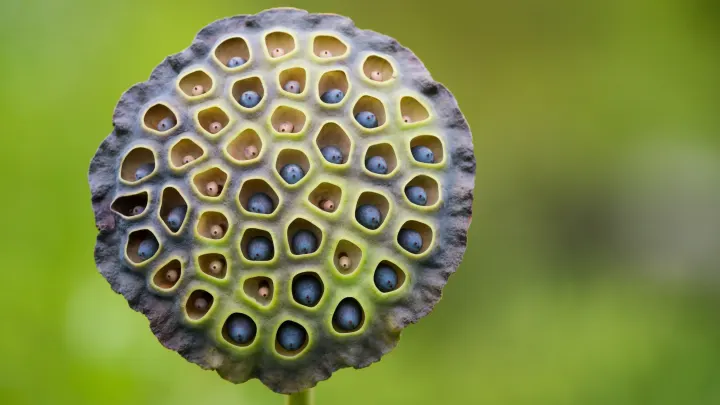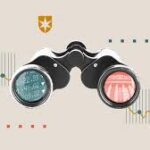: Understanding Trypophobia: Unraveling the Mystery Behind the Fear of Clustered Holes

Trypophobia is a psychological condition characterized by an intense aversion to clusters of small holes or irregular patterns. Although not officially recognized as a mental disorder in the Diagnostic and Statistical Manual of Mental Disorders (DSM-5), trypophobia has gained attention in recent years due to its prevalence on social media and the internet. This article delves into the origins of trypophobia, its manifestations, potential causes, and the ongoing debate within the scientific community.
Table of Contents
ToggleDefining Trypophobia
The term “trypophobia” is derived from the Greek words “trypo,” meaning holes, and “phobia,” denoting an irrational fear. People with trypophobia experience intense discomfort or anxiety when exposed to images or objects containing small, clustered holes. Common triggers include lotus seed pods, honeycombs, and certain corals. These images can evoke a range of physical and emotional responses, such as nausea, goosebumps, and a sense of unease.
Manifestations of Trypophobia
The manifestations of trypophobia can vary widely among individuals. Some may only experience mild discomfort, while others may endure severe anxiety or panic attacks. Exposure to trypophobic stimuli can lead to symptoms such as sweating, trembling, rapid heartbeat, and avoidance behavior. The fear is not limited to real-life objects; trypophobic reactions can also be triggered by images, videos, or virtual simulations.
The Internet and Trypophobia
The rise of social media and online content-sharing platforms has contributed to the increased visibility of trypophobia. Users often share and create content featuring trypophobic triggers, leading to a wider audience encountering these images. While some posts are meant to raise awareness about the condition, others may inadvertently expose individuals with trypophobia to distressing stimuli.
Controversies and Debates
Despite the growing recognition of trypophobia, its status as a legitimate psychological condition remains controversial within the scientific community. Some argue that trypophobia is a specific and distinct phobia, while others contend that it may be a subset of other anxiety disorders. The absence of trypophobia in major diagnostic manuals like the DSM-5 adds to the debate, with critics suggesting that it may be a product of social contagion rather than a bona fide mental health concern.
Potential Causes of Trypophobia
The underlying causes of trypophobia are not fully understood, and research on the topic is still in its early stages. Some theories propose that the fear of clustered holes may be rooted in evolutionary psychology, where patterns resembling poisonous or dangerous organisms trigger an innate survival response. Others suggest that trypophobia may be linked to cultural factors, personal experiences, or even genetic predispositions.
Neurological Aspects of Trypophobia
Neuroscientists have explored the brain’s response to trypophobic stimuli through neuroimaging studies. These studies suggest that trypophobia activates specific regions of the brain associated with emotional processing and threat detection. Understanding the neurological basis of trypophobia could provide valuable insights into its nature and potentially inform therapeutic approaches.
Coping Strategies and Treatment
For individuals experiencing trypophobia, coping strategies are essential for managing the condition. Cognitive-behavioral therapy (CBT), exposure therapy, and mindfulness techniques have been suggested as potential therapeutic interventions. However, more research is needed to determine the effectiveness of these approaches specifically for trypophobia.
Conclusion
Trypophobia, the fear of clustered holes, remains a subject of fascination and debate in both scientific and online communities. As awareness of this condition continues to grow, it is crucial to approach the topic with sensitivity and respect for those who may be affected. While the understanding of trypophobia is still evolving, ongoing research and open conversations can contribute to a better grasp of this unique phenomenon and pave the way for effective support and treatment for individuals who experience it.
Q1: What is trypophobia? A1: Trypophobia is a psychological condition characterized by an intense aversion to clusters of small holes or irregular patterns. Individuals with trypophobia may experience anxiety, discomfort, or even panic attacks when exposed to images or objects containing such patterns.
Q2: What are common triggers for trypophobia? A2: Common triggers for trypophobia include lotus seed pods, honeycombs, and certain corals. Images or objects with irregular clusters of small holes tend to evoke strong emotional and physical responses in individuals with trypophobia.
Q3: Is trypophobia officially recognized as a mental disorder? A3: As of now, trypophobia is not officially recognized as a mental disorder in widely accepted diagnostic manuals like the DSM-5. The status of trypophobia within the field of psychology is still a subject of debate.
Q4: Are there any physical symptoms associated with trypophobia? A4: Yes, individuals with trypophobia may experience physical symptoms such as sweating, trembling, rapid heartbeat, nausea, and goosebumps when exposed to triggering stimuli.
Q5: How prevalent is trypophobia? A5: The prevalence of trypophobia is not well-established. It appears to vary among individuals, and more research is needed to determine the overall prevalence of this condition.
Q6: Can trypophobia be triggered by virtual images or videos? A6: Yes, trypophobia can be triggered by virtual stimuli, including images and videos. The condition is not limited to real-life objects, and exposure through digital media can also elicit strong reactions.
Q7: Why do some people experience trypophobia while others do not? A7: The causes of trypophobia are not fully understood. Some theories suggest that it may be rooted in evolutionary psychology, while others propose cultural or genetic factors. Research on the topic is ongoing.
Q8: Are there any treatments for trypophobia? A8: Therapeutic approaches such as cognitive-behavioral therapy (CBT), exposure therapy, and mindfulness techniques have been suggested as potential treatments for trypophobia. However, the effectiveness of these interventions specifically for trypophobia is still under investigation.
Q9: Can trypophobia be a result of social contagion? A9: There is ongoing debate about whether trypophobia is a genuine psychological condition or if it may be influenced by social contagion – the spread of symptoms through exposure to media or online content.
Q10: Should trypophobic individuals avoid certain websites or social media platforms? A10: It may be advisable for individuals with trypophobia to be mindful of their online content consumption and consider using content filters or avoiding specific websites or platforms that frequently feature trypophobic triggers.
Q11: Is trypophobia a lifelong condition? A11: The trajectory of trypophobia varies among individuals. While some may experience it throughout their lives, others may find that symptoms lessen or resolve over time, especially with appropriate therapeutic interventions.
Q12: Can trypophobia be self-diagnosed? A12: While individuals may recognize their aversion to clustered holes, a formal diagnosis should be made by a qualified mental health professional. Self-diagnosis is not a substitute for professional assessment and guidance.
Remember that seeking guidance from mental health professionals can provide personalized insights and support for individuals dealing with trypophobia. It’s essential to approach the topic with empathy and understanding, recognizing the unique experiences of those affected by this condition.






